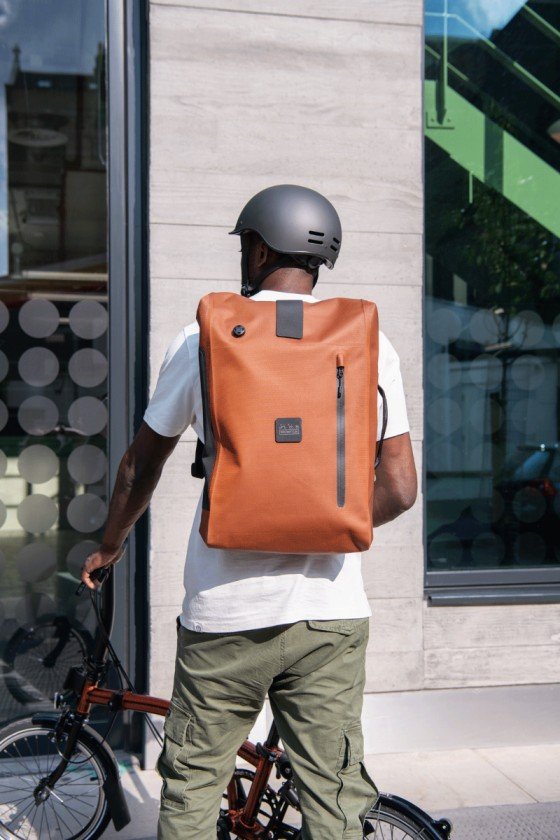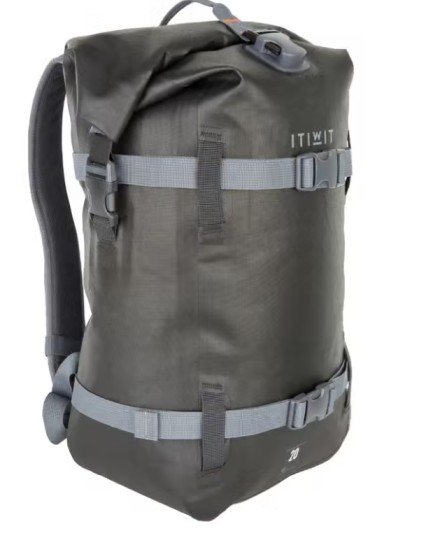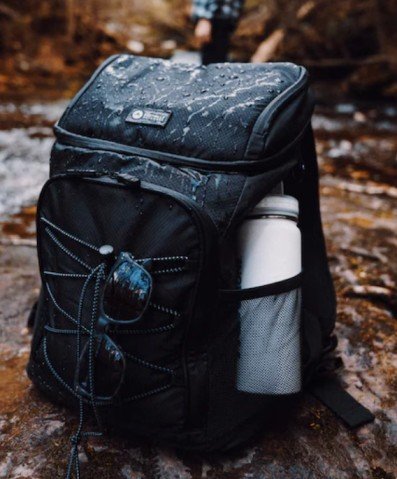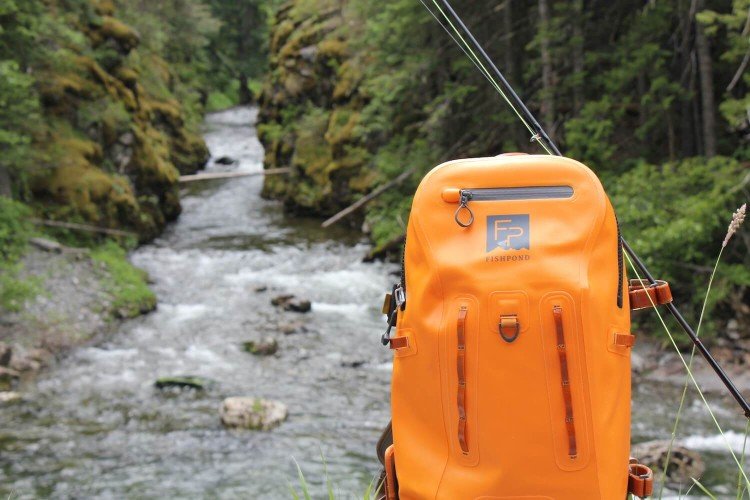
I. Introduction
Waterproof backpacks are a popular choice for outdoor enthusiasts, commuters, and travelers, thanks to their ability to keep belongings safe and dry in wet conditions. However, not all waterproof backpacks are created equal, and the level of craftsmanship can make a significant difference in the backpack’s performance and longevity.
II. Design
Design is an essential aspect of creating high-quality waterproof backpacks. A well-designed backpack will meet specific needs, provide comfort, be easily accessible, have an appealing appearance, and be functional. Innovative designs in waterproof backpacks are constantly emerging as designers seek to improve the functionality, comfort, and style of backpacks. Here are a few examples of innovative designs in waterproof backpacks:
- Roll-top closure: A roll-top closure is a popular feature in waterproof backpacks that provides an airtight seal to protect the contents from water. This closure system allows users to adjust the size of the backpack to fit the contents and helps keep the backpack compact and streamlined.
- Air suspension system: Some waterproof backpacks feature an air suspension system that helps distribute the weight of the backpack evenly across the back. This feature helps reduce pressure points and ensures that the backpack is comfortable to wear for extended periods.
- Convertible design: A convertible design allows users to transform the backpack into a different type of bag, such as a tote or messenger bag. This feature provides versatility and convenience for users who may need to switch between different carrying modes.
- Magnetic closures: Some waterproof backpacks use magnetic closures instead of zippers or clasps. These closures provide a secure seal while also allowing for easy access to the contents of the backpack.
- Integrated solar panels: Some waterproof backpacks feature integrated solar panels that can charge electronic devices while on the go. This feature is especially useful for outdoor enthusiasts who may not have access to traditional charging methods.
- Multi-functional pockets: Waterproof backpacks with multi-functional pockets allow users to store a variety of items in one place, such as a laptop, phone, and water bottle. These pockets often have designated slots or compartments for each item, making it easy to access them when needed.
Innovative designs in waterproof backpacks are constantly evolving to improve functionality, comfort, and style. Roll-top closures, air suspension systems, etc. are just a few examples of the many innovative features available in modern waterproof backpacks.

III. Material Selection
Importance of material selection
Materials are a critical factor in determining the durability, waterproofing, weight, and comfort of a backpack. For waterproof backpacks in particular, selecting the right materials is imperative.
- Durability is key – robust materials such as nylon, polyester, or Cordura can withstand the most grueling of outdoor activities. Waterproofing is also a vital concern and can be ensured through the use of laminated nylon or waterproof zippers.
- For those on the move, reducing the overall weight of a backpack is of utmost importance. Consider lightweight materials like ripstop nylon or Cuben fiber as viable options to cut down on weight without sacrificing durability or waterproofing.
- Comfort is also a crucial element to think about, especially for lengthy wear periods. Think about how mesh, foam, or neoprene materials can enhance ventilation, cushioning, and moisture-wicking to provide maximum comfort.
- Finally, the type of materials used in the design of a backpack can lend itself to a certain aesthetic. Choose from classy leather, sophisticated canvas, or sporty neoprene and nylon to achieve the look you want.

Types of materials commonly used
- Nylon: Nylon is a durable, lightweight, and water-resistant material commonly used in the construction of waterproof backpacks. It is also resistant to abrasions and punctures, making it an ideal choice for outdoor activities.
- Polyester: Like nylon, polyester is a durable and water-resistant material that is commonly used in waterproof backpacks. It is also resistant to UV radiation and has a low level of moisture absorption.
- PVC: Polyvinyl chloride (PVC) is a synthetic plastic material that is often used in waterproof backpacks. It is highly water-resistant and durable, making it an ideal material for backpacks that are exposed to harsh weather conditions.
- TPU: Thermoplastic polyurethane (TPU) is a flexible and durable material that is commonly used in waterproof backpacks. It has excellent resistance to abrasions, punctures, and chemicals, and is also environmentally friendly.
- Cordura: Cordura is a type of nylon fabric that is known for its exceptional durability and abrasion resistance. It is often used in the construction of backpacks that are designed for rugged outdoor activities.
- Gore-Tex: Gore-Tex is a waterproof and breathable fabric that is commonly used in the construction of high-end waterproof backpacks. It is made up of a thin membrane that allows moisture to escape while preventing water from entering the backpack.
IV. Manufacturing Process

- Design and Pattern Making: As mentioned earlier, the first step is to create the design and pattern for the backpack. Designers will often create multiple prototypes to test different materials and designs. Quality checks at this stage include ensuring that the dimensions and features specified in the design are accurate and that the pattern is properly aligned and proportioned.
- Fabric Cutting: Once the pattern is finalized, the fabric is cut into the different pieces required to construct the backpack. Quality checks at this stage include ensuring that the fabric is cut accurately and that the pieces are consistent in size and shape.
- Sewing: The cut pieces of fabric are then sewn together using a combination of automated and manual processes. Quality checks at this stage include ensuring that the seams are straight and that the stitching is consistent and free of defects.
- Waterproofing: Once the backpack is sewn together, it is waterproofed using a variety of methods depending on the materials used. For example, some backpacks may be coated in a waterproof layer or have waterproof zippers. Quality checks at this stage include ensuring that the backpack is properly waterproofed and that there are no leaks or weak points.
- Finishing: The final step is to add any finishing touches such as straps, buckles, and logos. Quality checks at this stage include ensuring that all components are securely attached and that the backpack looks and functions as intended.
Throughout the manufacturing process, quality checks are performed at each stage to ensure that the backpack meets the required standards for durability, waterproofing, and functionality. These checks may include visual inspections, stress tests, and waterproofing tests. By ensuring that every step of the manufacturing process is carefully monitored and quality checked, manufacturers can produce high-quality waterproof backpacks that will last for years.

V. Testing methods and standards
- Water Resistance Testing: This involves subjecting the backpack to a predetermined amount of water and checking for any leaks or weak points in the waterproofing. The most common standard for water resistance testing is the Ingress Protection (IP) rating, which rates the degree of protection against water and dust ingress.
- Durability Testing: This involves subjecting the backpack to a variety of stress tests to simulate wear and tear over time. These tests may include abrasion testing, puncture testing, and drop testing. The most common standard for durability testing is the American Society for Testing and Materials (ASTM) standard, which sets minimum requirements for durability and strength.
- Comfort Testing: This involves evaluating the backpack’s ergonomic design and comfort level when worn. Comfort testing may involve wearing the backpack for extended periods of time and evaluating factors such as weight distribution, ventilation, and adjustability.
- Chemical Testing: This involves testing the backpack for any harmful chemicals or substances that may be present in the materials or manufacturing process. The most common standard for chemical testing is the REACH standard, which sets limits on the use of certain chemicals in consumer products.
By using these testing methods and standards, manufacturers can ensure that their waterproof backpacks meet the required quality and performance standards and are safe and comfortable for consumers to use.
VI. Conclusion
In conclusion, the craftsmanship of high-quality waterproof backpacks is an intricate process that requires careful consideration of design, materials, and manufacturing techniques. The design process must take into account factors such as functionality, comfort, and aesthetics, while the materials used must be durable, waterproof, and free from harmful chemicals. The manufacturing process must be carefully monitored and quality checked at each stage to ensure that the backpack meets the required standards for durability, waterproofing, and functionality.
Feeling overwhelmed by the complex process of creating a waterproof backpack? Let our team of professionals take care of it for you! We’ll supply the waterproof backpack that meets all your specifications and elevates your waterproof backpack sales. Contact us today by filling out the form on the right side to get started.

